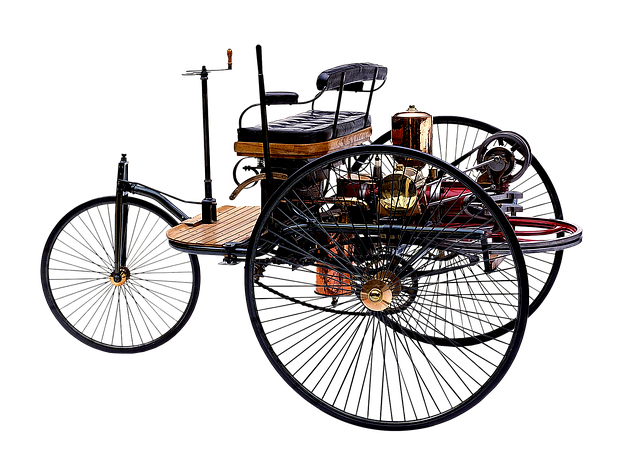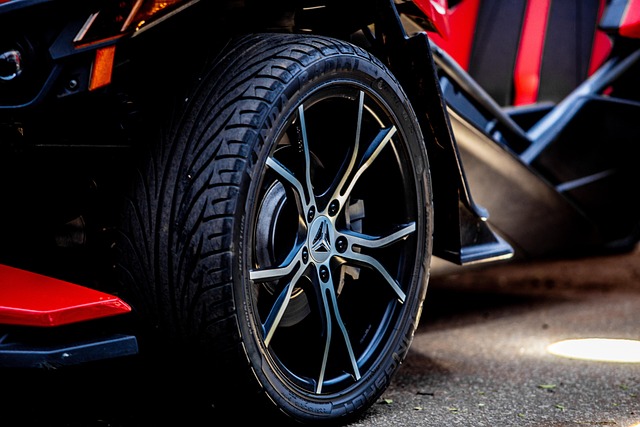Looking to register your car in California? This comprehensive guide will walk you through the process step by step. Understanding the state’s requirements is crucial, so we start by breaking down what you need to know. Gather essential documents, including proof of ownership and insurance. Next, verify your Vehicle Identification Number (VIN) using a DMV vin verifier. Visit or contact your local DMV, complete the registration process, pay fees, and receive your license plate.
- Understand California Car Registration Requirements
- Gather Necessary Documents for Car Registration
- Visit or Contact the DMV to Register Your Vehicle
- Verify VIN and Complete Online or In-Person Process
- Pay Registration Fees and Receive Your License Plate
Understand California Car Registration Requirements

Before registering your car in California, it’s crucial to understand the state’s specific requirements. The California Department of Motor Vehicles (DMV) mandates that all vehicles operating within its borders be properly registered and inspected. This involves providing key information about your vehicle, including its make, model, year, and unique Vehicle Identification Number (VIN). A reliable VIN verifier, like a mobile VIN verification service or an online tool, can help you gather these details accurately.
Additionally, California requires a comprehensive inspection to ensure that your car meets safety and emissions standards. This process involves checking various components of your vehicle, from lights and brakes to pollution control systems. Once your car passes this inspection, you’ll receive a registration certificate and license plate, allowing you to legally operate your vehicle on California roads. Remember, adhering to these requirements not only ensures compliance but also contributes to the overall safety and efficiency of California’s transportation network.
Gather Necessary Documents for Car Registration

Before heading to the California DMV (Department of Motor Vehicles) for car registration, make sure you have all the essential documents in order. One crucial piece is the vehicle’s unique identifier—the VIN (Vehicle Identification Number). You can obtain this by checking the driver’s side door frame or the engine block. A reliable method to verify this number is through a DMV-approved vin inspection or using a mobile vin verifier for convenience.
Additionally, gather important paperwork like your car’s title, proof of insurance, and current registration (if transferring from another state). These documents are vital during the registration process, ensuring a smooth transition to California’s vehicle registration requirements.
Visit or Contact the DMV to Register Your Vehicle

To begin the process of registering your vehicle in California, the first step is to visit or contact the Department of Motor Vehicles (DMV). This crucial agency serves as the central authority for all vehicle-related matters, including registration and titling. Whether you opt to visit a local DMV office or conduct the process remotely, their website offers detailed guidelines and resources.
At the DMV, you’ll need to provide essential documents like proof of ownership (a valid title or bill of sale), current vehicle inspection results, and identification. If you’re using a mobile vin verifier for inspection purposes, ensure it’s approved by the DMV. This step is vital as it verifies your vehicle’s history and ensures compliance with California’s registration standards.
Verify VIN and Complete Online or In-Person Process

Before initiating the car registration process in California, it’s crucial to verify your vehicle’s VIN (Vehicle Identification Number) using a reliable method like a DMV VIN verifier or mobile vin inspection tool. This step ensures that your vehicle is genuine and eligible for registration. You can perform this simple check online or in-person at a local DMV office.
To complete the registration, you’ll either need to submit an application through the California DMV’s official website or visit a regional DMV office. The former involves an entirely digital process, while the latter requires physical documentation. Both methods require providing proof of ownership, vehicle inspection (if applicable), and relevant fees. A mobile vin verifier can be beneficial here, as it allows for quick verification during your journey, ensuring a smoother registration experience.
Pay Registration Fees and Receive Your License Plate

After completing your vehicle’s registration application at the California DMV, it’s time to pay the associated fees. These fees vary based on factors such as the type of vehicle and whether you’re renewing or transferring ownership. You can typically pay online, over the phone, or in person at a local DMV office. Once your payment is processed, you’ll receive your registration card and, most importantly, your license plate.
Don’t forget that your vehicle’s Vehicle Identification Number (VIN) plays a crucial role in this process. For convenience, many individuals opt for a mobile VIN verifier to ensure the accuracy of their vehicle’s details before visiting the DMV. This step is essential as it verifies your car’s history and helps prevent fraud, making the registration process smoother and faster.
Registering a car in California is a straightforward process that requires understanding key requirements, gathering essential documents, and verifying your vehicle’s unique identifier (VIN) through a trusted DMV vin verifier. By following these steps and completing the online or in-person registration process, you’ll promptly have your vehicle licensed and ready to hit the bustling California roads.
